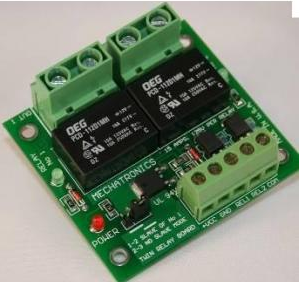It is well known that voids are formed when soldering large flat and low-foot height components, such as QFN components. The use of these types of components is increasing. In order to meet IPC standards, the formation of voids has caused many designers, SMT patch production line operators and quality control personnel to feel headaches. This article will focus on a new method of reducing voids.
When we look closely at the solder joints and voids, a major parameter seems to have not attracted people's attention. This is the solder alloy. As a preliminary test, the three commonly used lead-free solder alloys on the market all have the characteristics of voiding behavior.
Further research strategies include using tin, bismuth, silver, zinc, copper and other elements to adjust these alloys and observe their effects on void behavior. Since this method quickly produced many alloys, TGA analysis was used as an initial selection tool. Using TGA analysis, it is possible to monitor the evaporation of the chemical composition of the flux and the reflow temperature profile in the process of combining with a certain alloy. Experience has shown that a smoother evaporation curve generally means a lower level of void formation. From this study, eight prototype solder alloys were selected and characterized by their void behavior.

To this end, 60 QFNs coated with each alloy were soldered on three different coated substrates: NiAu (ENIG), OSP, and I-Sn. The chemical composition of solder paste, template thickness and layout, and substrate layout used in all alloys are the same. The welding temperature curve is used according to the melting point of the alloy. X-rays are used to determine the void rate level. One of the alloys obtained the best results in cavitation behavior and was selected for further mechanical reliability testing.
1. Introduction
The mechanism of void formation in solder joints has been the subject of research for many years. Many void types and formation mechanisms have been identified. The most striking thing is the large voids. The main factor in the formation of large voids seems to be the chemical composition in the solder paste.
Microvoids, shrinkage voids, and Kirkendall voids are also well-known and well-known types of voids, but they are outside the scope of this article. Many techniques for reducing void formation have been established over the years.
Adjusting the chemical composition of solder paste, reflow soldering temperature profile, component, PCB and template design or coating are some optimization tools that are currently being widely used by SMT chip proofing manufacturers. Even equipment manufacturers are offering solutions to reduce void rates, through frequency sweeping or vacuum technology. However, there is another very important parameter that defines void formation-welding alloys.
Welding alloy: An unusual and suspicious factor. The main cause of void formation has always been considered to be the flux in the solder paste. Designing a solder paste flux that can effectively reduce voids seems to be the correct method, because about 50% of the flux will evaporate during the reflow process, resulting in voids. Since the focus is on the solder paste flux, until now, the research on the difference in void formation of different solder alloys has not paid much attention.
The void level is measured using standard solderable alloys to establish a baseline void formation percentage, such as SnAg3Cu0.5 (SAC305), SnAg0.3Cu0.7 (LowSAC0307) and Sn42Bi57Ag1. The same solder paste chemistry was used in all the tests described in this article.
In order to understand the level difference between PCB coatings, three types of coatings commonly used in the industry were tested: OSPCu, ENIG (NiAu) and I-Sn. In order to have enough voids, a 120μm template was used without any reduction in the pad. For each solder paste, 60 Sn-coated QFN components are reflow soldered using a standard heating reflow profile suitable for each specific solder alloy.
X-ray inspection of each component and measurement of the void level of the ground plane to determine the void percentage. Calculate the void percentage by comparing the void area with the ground plane area. The size of a single cavity is not considered. The test results show that the results of SAC305 and LowSAC0307 are quite poor. Sn42Bi57Ag1 obtains better results.
2. Alloy optimization
Based on these test results, from the perspective of void properties, a research program for the best welding alloy was established. The research protocol used TGA analysis and X-ray analysis. In addition, other parameters are also considered, such as reflow temperature profile, yield strength, viscosity range, elongation and other process parameters.
The R&D strategy involves starting with a standard lead-free solder alloy and adjusting it with tin, bismuth, silver, zinc, copper, etc. This quickly produced many candidate alloys, and TGA analysis was used as an initial selection tool. Using TGA analysis, it is possible to monitor the evaporation of the chemical composition of the flux and the reflow temperature profile in the process of combining with a certain alloy. A smoother evaporation curve generally means a lower level of void formation. Eight prototype solder alloys were selected from this research as further research objects.
Three, 8 kinds of prototype solder alloys
The same test setup was performed on 8 prototype solder alloys as the initial benchmark test. This means that each solder paste is used to solder QFNs on different PCB finishes, and X-rays are used to analyze the true void properties. Preliminary test results show that compared with the standard alloys SAC305, LowSAC0307 and Sn42Bi57Ag1, the void rate level is significantly reduced. The test alloy G has the lowest void ratio and the narrowest spreading result.
This alloy was selected for further mechanical reliability testing.
Compared with SAC305, it not only has low void performance, but also has good shock and vibration resistance and thermal cycle performance. In addition, the alloy has also been proven to be suitable for wave soldering and selective soldering in addition to reflow soldering. Alloy G will be named after LMPA-Q and will be commercialized.